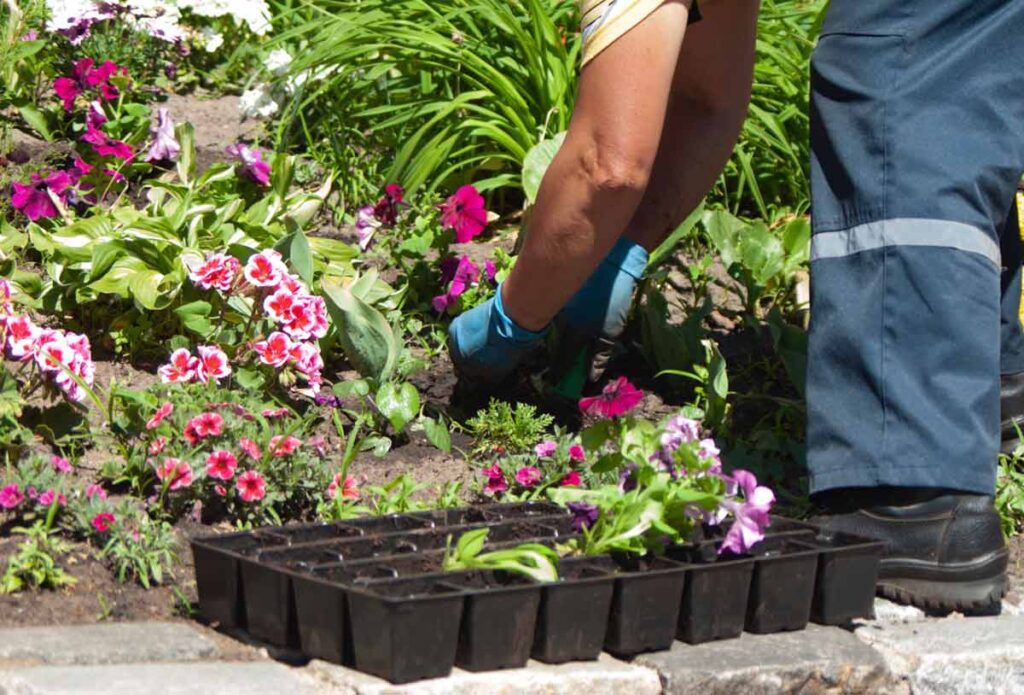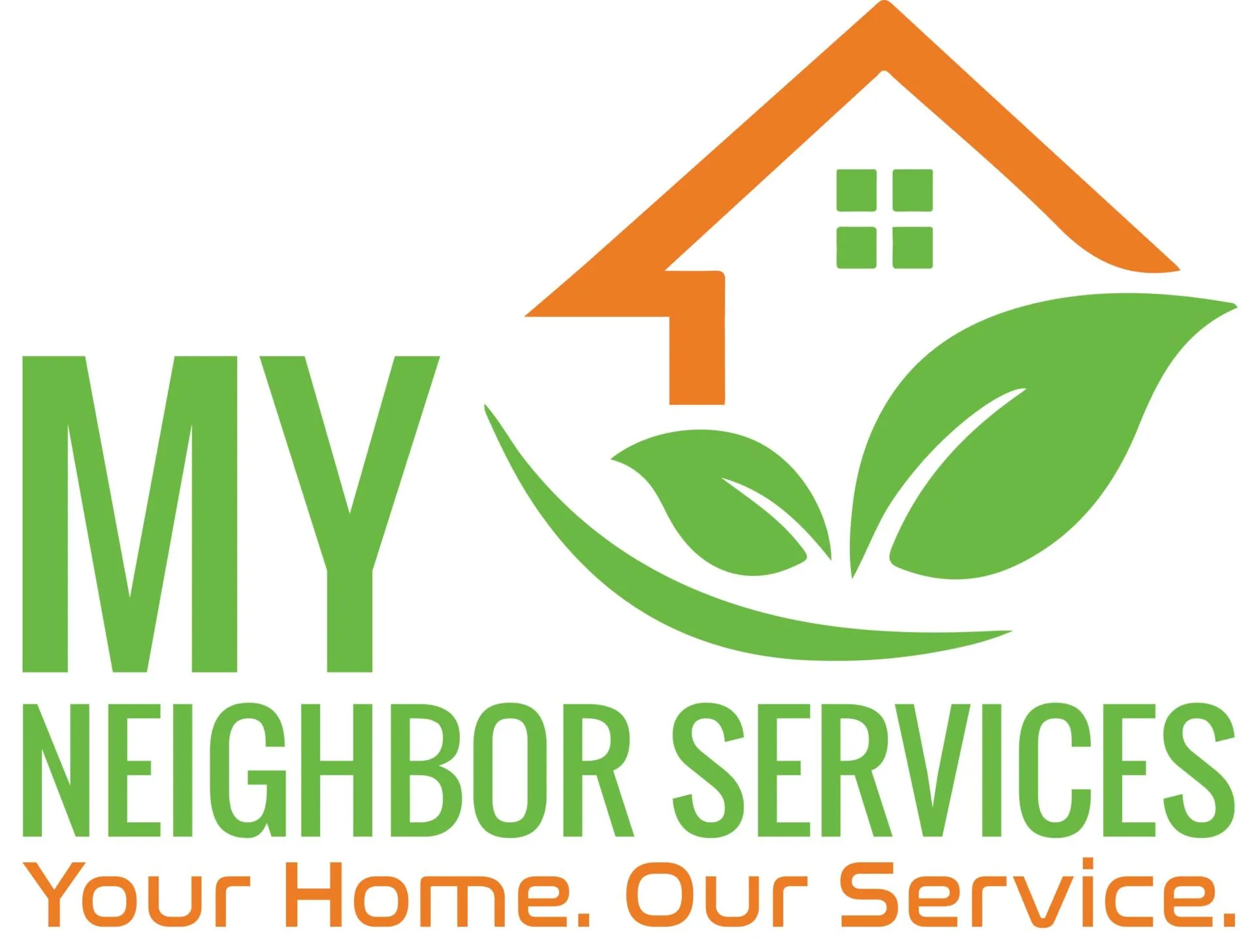
Flower Bed Services: 2023 Tips on How to Get It Ready
The gardening bug has bitten you. You want to start your garden, or at least a flower bed, to beautify your landscape or support pollinators or beautify your landscape. We’ll walk you through how to get a new flower bed ready – whether you want a DIY or are considering hiring flower bed services. We will cover the necessary things that could help you, from what tools you’ll need, suggest a few plants for your new bed, and offer growing tips.
In this blog, we will cover the following:
- Testing
- Location and Sunlight
- Tools required in flower bed services
- Soil preparation in flower bed services
- The no-dig approach
- Flower Bed Services: Irrigation
- Should you mulch or not?
- What to Grow
Flowerbed Soil Testing
Before digging the flower garden bed, get the soil analyzed by the local Extension Service. The test will determine which nutrients are present in the ground and which soil amendments, such as nitrogen, are required. The test will also determine the pH of the soil. The pH of the soil determines whether it’s alkaline or acidic. Neutral is 6.5 to 7, alkaline is greater than 7.5, while acidic is less than 6.5.
Most plants thrive in neutral soil, but some, such as rhododendrons, require acidic soil. And lavender thrives on alkaline soil. If a plant grows in soil with an incorrect pH, it cannot absorb and process the nutrients required to survive. Urban areas may want to have their soil tested for lead.
Location and Sunlight
Most sun-loving plants thrive in roughly 8 hours of direct sunlight every day. Shade gardens thrive with 4 to 6 hours of direct or filtered sunlight daily. Plants receive the maximum sunlight when grown in an east-west garden bed.
The best setting is flat ground. You don’t want a puddle to form after a downpour. Having a water source close, on the other hand, is beneficial.
Planting under trees is not recommended since their roots compete with plants for water and nutrients. Rather than developing straight down, most tree roots are in the upper 18 to 24 inches and extend beyond the drip line.
Start modestly if this is your first flower garden. You don’t want to lose interest due to a lack of weeding or watering. As you gain experience, you can always enlarge the bed.
Tools Required in Flower Bed Services
Purchase a shovel or spade to dig your new garden bed. A spade has a straight edge, and a shovel has a rounded tip. A garden fork can also help dig, especially if the soil is hard or dense.
Planting perennials, annuals, and bulbs requires using a trowel or a garden knife. These instruments also function as weeders. Weeding can also be done with a long-handled stirrup hoe or a standard hoe.
Soil Preparation in Flower Bed Services
Plan the size of the flower bed. The depth of a flower bed, measured from top edge to bottom edge, should be between 3 and 4 feet. This allows you to reach an arm’s length into the bed without stepping in to trim flowers or water plants. Walking in the beds compacts the earth, making it difficult for plants to form roots. Flower bed edging can make a difference in your garden’s look, so consider the aesthetics too.
Grass and weeds should be removed from the soil’s surface. Scrape the top inch or two of soil away using a sharp spade or shovel. If you are removing grass from a wide area, you may wish to rent a sod cutter. Although you can turn grass and weeds back into the earth as you dig, you risk spreading noxious seeds. Herbicides can also be used. Read and strictly follow the directions on the label.
Now you dig. This is exhausting labor. It would be best to dig flower beds about 12 inches deep or as deep as a shovel’s blade. Break up any clumps of soil into pea-size bits with the blade or a hoe. To churn up the earth, you can also rent a rototiller.
Include vitamins. After digging the bed, spread a 2 to 3-inch thick layer of chopped leaves, compost, other organic matter, well-rotted manure, and untreated grass clippings over the soil and lightly work it in. Organic matter enriches the soil, enhances its quality, and feeds microorganisms. It promotes drainage in clay soil. Organic stuff helps sandy soil retain water. Depending on your soil type, the findings of the soil test will inform you what other amendments you need to add.
The No-Dig Approach
If you want less time preparing the dirt for your new flower bed, buy a planter’s mix from a landscaping company. Planter’s mix is a mixture of soil, compost, and other organic matter appropriate for your location. Give the provider the measurements of the flower bed and the desired depth (approximately 10 to 12 inches), and they will calculate how many yards of planter’s mix you will want. It is also the most excellent technique to obtain dirt for a raised bed. Now you’re ready to prep your garden:
• Lay three or four sheets of newspaper or a flattened brown paper bag on top of the grass or weeds before spreading the planter’s mix.
• Spread the planter’s mix over the paper. The paper suffocates weeds and grass before disintegrating. There is no need to worry about lead-based ink poisoning the earth. Soy-based inks are now used by publishing companies.
The fact that you are not breaking into the weed seed bank – all types of seeds that have been underground for years – is a significant advantage of employing the no-dig method. Digging and exposing the seeds to light and water encourages germination, which can lead to a weedy bed.
Flower Bed Services: Irrigation
When watering by hand, utilize a showerhead nozzle on your hose. Spray the water around the plant’s base. Water new plants every several days until they establish themselves. If it doesn’t rain, water once a week as needed.
Set your irrigation system at a different rate and frequency than your lawn. Flowers, for example, require less water than grasses. Your irrigation consultant can assist you with this.
Should you mulch or not?
Weeds are the last thing you want in your new flower bed. Mulch suppresses weeds and preserves moisture in the soil. Organic materials, such as shredded bark or wood chips, pine needles, chopped leaves, compost, and rotting manures, are preferred. Avoid using landscape fabric in flower beds. Planting through landscape fabric is complex, and it does not inhibit weeds.
Mulch can also be gravel or various types of stones. Remember that rocks reflect heat to the plants, potentially drying out the leaves. In addition, gravel and rock are difficult to move if you want to rearrange your plants.
What to Grow
Begin looking for plants now that your soil has been prepped for your new flower bed. Plants in flower beds can bloom all year. It only takes a little investigation. You want enough variety to ensure that blooms are always present. Native plants are the best for bees and pollinators.
Planting transplants from a garden center is your best bet. Apply an all-purpose fertilizer according to package guidelines. During the growing season, perennials and bulbs rarely require much fertilizer. In the spring, apply a granular product to the top inch of perennial plant bases.
Here are a few flower ideas:
Spring
- Bulbs: Daffodils and tulips
- Perennials: Columbine and woodland sedum
- Annuals: Pansies, violas, and snapdragons
Summer
- Bulbs: Lilies
- Perennials: Coneflowers, black-eyed Susan, and garden phlox
- Annuals: Cosmos and flowering tobacco
Fall
- Bulbs: Saffron and colchicum
- Perennials: Asters and mums
- Annuals: Pansies, ornamental cabbage, and kale
The Final Word
A beautiful garden starts with the proper foundation, the flower bed itself. Testing and prepping the soil helps plants absorb and process the nutrients they need to thrive. If you need help, My Neighbor Services offers flower bed services, flower bed edging, and many more. Call us today for a free consultation.
